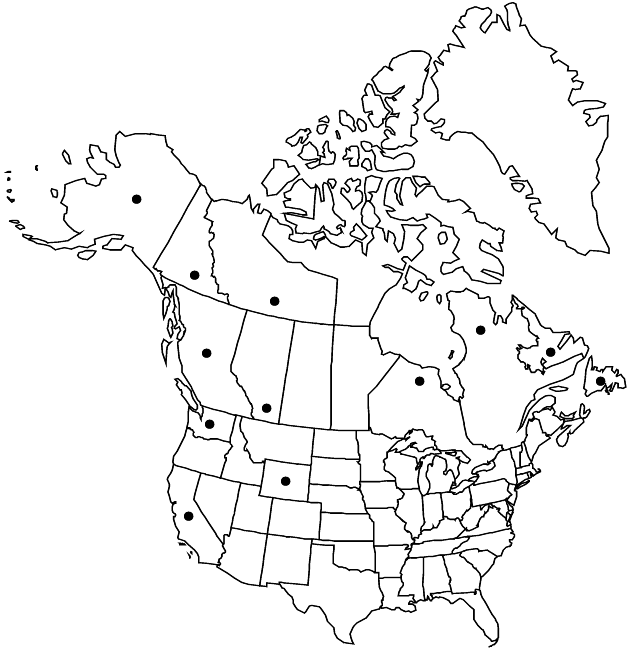Difference between revisions of "Packera pauciflora"
Bot. Not. 128: 520. 1976.
FNA>Volume Importer |
FNA>Volume Importer |
(No difference)
| |
Revision as of 18:41, 24 September 2019
Perennials, 20–40+ cm; fibrous-rooted (caudices weakly spreading, horizontal to erect). Stems 1 or 2–3, clustered, glabrous or glabrate. Basal leaves (relatively thick and turgid) petiolate; blades elliptic-ovate, ovate, or subreniform, 20–40+ × 10–30+ mm, bases tapering to subcordate, margins dentate to crenate (proximal cauline leaves petiolate; margins dissected to pinnatifid). Cauline leaves gradually reduced (sessile, subentire). Heads 1–6+ in open to compact, subumbelliform arrays. Peduncles bracteate (bractlets cyanic or reddish), glabrous or sparsely tomentose distally. Calyculi conspicuous (bractlets deep red or at least apices deep red to purple). Phyllaries 13 or 21, deep red or green (then tips deep red to purple), 7–10 mm, glabrous. Ray florets 0 or 8–13; corolla laminae (deep orange-yellow) 5–7 mm. Disc florets 60–80+; corolla tubes 1.5–2.5 mm, limbs 2.5–3.5 mm. Cypselae 1–1.5 mm, glabrous; pappi 3–4.5 mm. 2n = 46, 130+.
Phenology: Flowering early Jul–late Aug.
Habitat: Damp meadows or woods, subalpine to alpine in west, lower in east
Elevation: 0–2700 m
Distribution

Alta., B.C., Nfld. and Labr., N.W.T., Ont., Que., Yukon, Alaska, Calif., Wash., Wyo.
Discussion
Heads of Packera pauciflora are usually discoid. Its range and habitat overlap those of P. indecora; the two can be difficult to distinguish. Disjunction from principal distribution to Sierra Nevada of California is 1200 km.
Selected References
None.